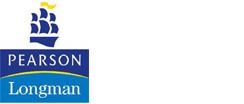- View more resources from this publisher
 Nuffield Foundation
Nuffield Foundation
Revised Nuffield Chemistry
The Nuffield Chemistry course for students aged 11-16 was first published in 1966. By 1971 the materials had been well tried in many schools. Dr Richard Ingle was appointed to prepare a second edition of the resources in the light of all the feedback from teachers.
Outcomes of the revision
As in the first edition the schemes on offer were intended only as samples, written for the guidance of those who want them. The schemes were not intended to limit those who like to teach chemistry in the spirit of the Nuffield course while following their own schemes. The principal outcomes of the revision included:
- a restructuring of the range of publications for teachers and students
- the offer of an alternative sample scheme for Stage II
- a new approach to quantitative chemistry in Stage II
- a change of style and emphasis in the Stage III options
- many amendments to points of detail in the practical work and approach to theory.
Structure of the course
- Stage I: Exploration of materials A two year programme for students aged 11-13 that covered methods of separation, elements, compounds, and chemical reactions.
- Stage II: Using ideas about atoms and particles A programme lasting for a little over two and a half years in which students were introduced to chemical theory quantitatively and qualitatively. Structure was emphasised, rather than bonding. Some topics focused on key applications of chemistry in agriculture and industry.
- Stage III: A course of options For O-level, students were expected to spend about a term studying two options chosen from a range of topics some of which were more theoretical whole others were more applied.
Two publications were not changed during the revision. These were The Handbook for Teachers and Collected Experiments.
Resources
Filter
The Handbook for Pupils was one of the main innovations of Revised Nuffield Chemistry. It was written in response to the many requests from teachers for more support for students in the form of a textbook.
The book was in three main parts. The first part covered chemical concepts from periodicity to...






